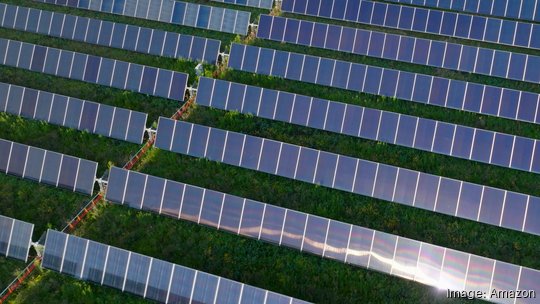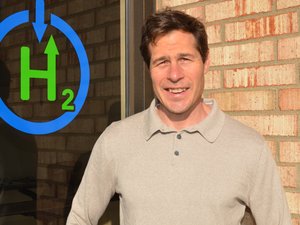
The second, industrial-scale phase of a test with AEP will determine if a Columbus hydrogen startup builds a Central Ohio factory creating hundreds of jobs.
Power to Hydrogen is “very confident” its technology solves a longtime puzzle of making solar and wind energy more economical for utilities to adopt, CEO Paul Matter said.
"We want to have our industrial scale system working by the end of the year," Matter said in an interview.
"We've already built larger cells," he said. "It’s just a matter of putting more of them together."
The pilots would run through 2025, and if successful Power to Hydrogen plans to build a factory in 2026.
Separately, Power To Hydrogen was awarded a $6.6 million grant from the U.S. Department of Energy this week as part of $750 million in funding for hydrogen technology. Matter's other company, PH Matter, was awarded $7.2 million.
The system uses electrolysis to break water molecules into hydrogen and oxygen. Before, that has required consuming more power than the resulting fuel would generate, and existing electrolysis systems require rare expensive catalysts such as platinum or iridium. Power to Hydrogen's cells are built mainly with nickel and steel, and operate at 70% less cost.
American Electric Power Company Inc. and a group of European energy groups funded a pilot starting last summer in AEP Ohio’s research facility in south Columbus. The study concluded in February.
AEP signed to fund the next step last year, Matter said. That was before the February shakeup replacing its CEO.
Other participants in the first phase were EDP, a Portuguese utility; E.On Group, a European energy network and infrastructure company; and Electricity Supply Board, Ireland's government-owned utility.
"We are at 40% clean electricity in Ireland already, but a paradigm shift in storage tech is now needed to hit 100%," John McKiernan, ESB's head of innovation pipeline, said in a news release. "The Power to Hydrogen pilot demo at AEP’s facility in Ohio offers genuine potential to crack the hydrogen price point challenge. We are excited about the prospects for low-cost megawatt scale facilities.
"History may very well show this technology was the linchpin for global Net Zero," he said, referring to the international climate goal to stop adding to greenhouse gases.
Luis Manuel, executive board member at EDP Innovation, called the test "an important milestone."
"This project can contribute significantly to the hydrogen industry, representing a promising step towards a cleaner alternative to traditional fossil fuels," he said in the release.
Why use hydrogen alongside solar or wind?
The power grid needs to match electricity generation to the demand by users – it can't take extra. As renewable sources replace fossil fuel, they can reduce overall costs but cause headaches for grid operators because they are so variable. (Here's an explainer by Resources for the Future.)
When the sun is shining or wind is blowing full blast, hundreds of gigawatts of excess energy are generated that can't connect to the grid, Matter said. But in the dark or when the air is still, firing up a natural gas plant takes hours.
The only way to capture the excess is to store it, and you can’t bottle sunshine. Battery storage is typically only four hours.
Power to Hydrogen’s unit uses solar or wind to power electrolysis, generating hydrogen to store in tanks on site. The utility can burn that for the grid or sell it.
"It can take up that excess energy and convert it into something useful," Matter said.
The systems are attractive for on-site production, because hydrogen also is hard to transport, he said.
In the first phase at AEP, the system ran on a simulated mode, with a computer mimicking the conditions of a typical solar field – telling the system it was cloudy or sunny, for example. The system was four times larger than any the startup had installed to date.
After 1,000 hours of operation, the system reliably produced hydrogen in reaction to changes in the grid load, and matched the durability of conventional electrolysis systems, according to a release.
The results of the larger pilot should show the technology works at industrial scale, Matter said, which would give confidence to utilities and others running large solar installations.
"Once we have those commercial orders, that’s when we can start talking about building a factory," Matter said.
Central Ohio remains the preferred location because of the workforce and existing complementary supply chains for automotive and other manufacturing.
Based in north Columbus, the company has 17 people today, which Matter said would grow to hundreds once adding manufacturing.
Power to Hydrogen has raised a cumulative $7.5 million in venture capital since it was founded in 2019. Other revenue comes from the research grants and pilots.
Another pilot with the U.S. Department of Energy is to produce hydrogen (and salt) from seawater.
Power to Hydrogen also has an ongoing project with NASA to develop a system for hydrogen generation and storage on the moon.







